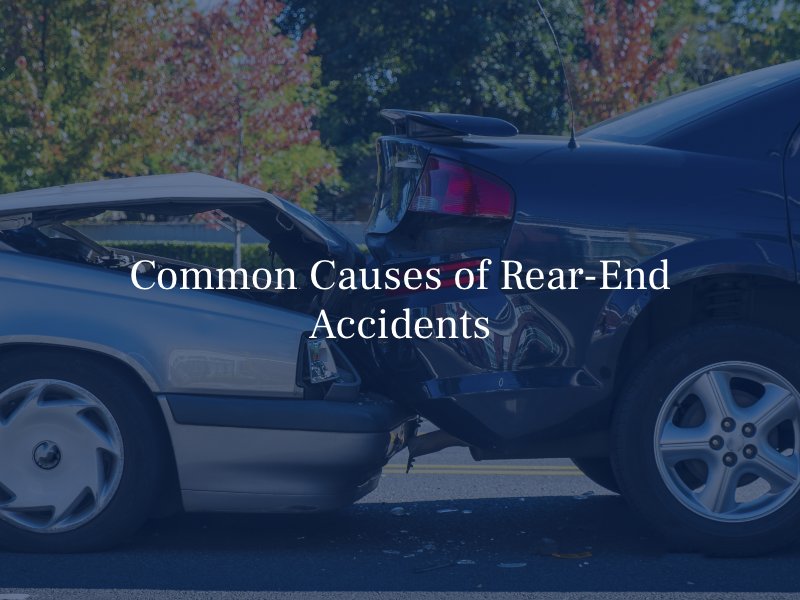Common Causes of Rear-End Accidents
November 10, 2023 Posted In Car Accidents
Rear-end accidents are among the most prevalent types of collisions on the roads, often resulting in property damage, injuries, and even fatalities. Here are their most common causes.

Distracted Driving
Distracted driving is one of the leading causes of rear-end accidents. When a driver diverts their attention from the road to engage in activities like texting, talking on the phone, or using in-car entertainment systems, they are less likely to notice changes in traffic conditions ahead. The crucial seconds it takes to refocus on driving can make a substantial difference in avoiding a collision. In the context of rear-end accidents, a distracted driver may fail to recognize a sudden stop or slowing traffic, leading to a delayed reaction or, in some cases, complete failure to brake in time. This is why using handheld devices while driving is illegal in California.
Following Too Closely (Tailgating)
When a driver follows another vehicle too closely, they limit the distance needed to stop or maneuver in response to sudden changes in traffic conditions. This diminished following distance becomes critical when the leading vehicle slows down or comes to a sudden stop. The tailgating driver may not have sufficient time to brake, leading to a rear-end collision.
Sudden Stops
A driver slamming on their brakes due to traffic conditions, road hazards, or unexpected obstacles can catch the following driver off guard, leading to a rear-end collision. Sudden stops disrupt the flow of traffic and require quick and attentive reactions.
Speeding
When a vehicle is traveling at an excessive speed, the driver has less time to see and respond to unexpected events, such as sudden stops or slowing traffic. Additionally, if a driver recognizes a need to stop, they may be unable to do so in time to avoid a collision. High speeds also exacerbate the force of impact, potentially leading to more severe injuries and property damage.
Weather Conditions
In inclement weather such as heavy rain, snow, or fog, drivers may struggle to see the road ahead and anticipate changes in traffic flow. Reduced traction on wet or icy roads makes it harder for vehicles to stop quickly, increasing the risk of rear-end collisions when drivers are unable to brake in time.
Faulty Brake Lights
When brake lights malfunction or are not working correctly, following drivers may not realize the deceleration of the vehicle in front of them. As a result, drivers can be caught off guard by sudden stops or slowing traffic.
Impaired Driving
Driving under the influence of alcohol or drugs impairs a driver’s judgment, reaction time, and coordination. Impaired drivers are more likely to cause rear-end accidents due to their reduced ability to respond to changing road conditions.
Inexperienced Drivers
Inexperienced or novice drivers may struggle with judging distances, maintaining appropriate following distances, and reacting quickly to changing traffic conditions, making them more prone to rear-end accidents.
If you or a loved one has suffered an injury in a rear-end accident caused by the negligence of another party, speak to an experienced Riverside car accident attorney today. They can help you prove liability and ensure you recover the compensation you deserve.